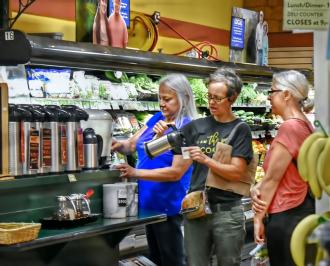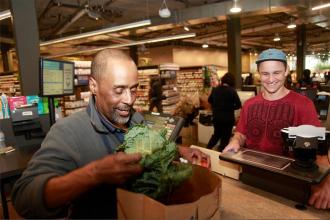Can Food Co-ops Survive the New Retail Reality?




As mega-retailers like Amazon-Whole Foods and Costco go after their customer base, community grocery stores are being forced to reinvent to stay relevant.
The Good Earth Market food cooperative in Billings, Montana, which opened its doors 23 years ago, closed in October 2017. Over the last few years, the long-loved community market had a hard time keeping up with increasing competition.
“Costco and Walmart and Albertsons and everyone has organic,” said Carol Beam, board president of the market for the last 13 years. “We knew what we needed to break even every week, and every week we were anywhere from $8,000 to $10,000 short.”
It’s not just in Montana—around the country, food retail is in a state of upheaval. In addition to co-ops being squeezed out of the organic food market they once largely provided, conventional grocery stores are also facing pressure from online retailers. And though food co-ops are no longer the easiest, or even the cheapest, way to access organic and local foods, those that have succeeded for the long haul may offer signs of hope for local economies.
C.E. Pugh, the chief operating officer of National Co+op Grocers (NCG), a cooperative providing business services for 147 food co-ops in 37 states, said co-ops began seeing a change in their fates starting in 2013. “The conventional grocers got very serious for the first time about natural and organic and added lots of products,” he said. “The impacts manifested themselves almost overnight in 2013.” ...
Read this article in full at Civil Eats.
KQED https://www.kqed.org/bayareabites/125376 – March 5, 2019







